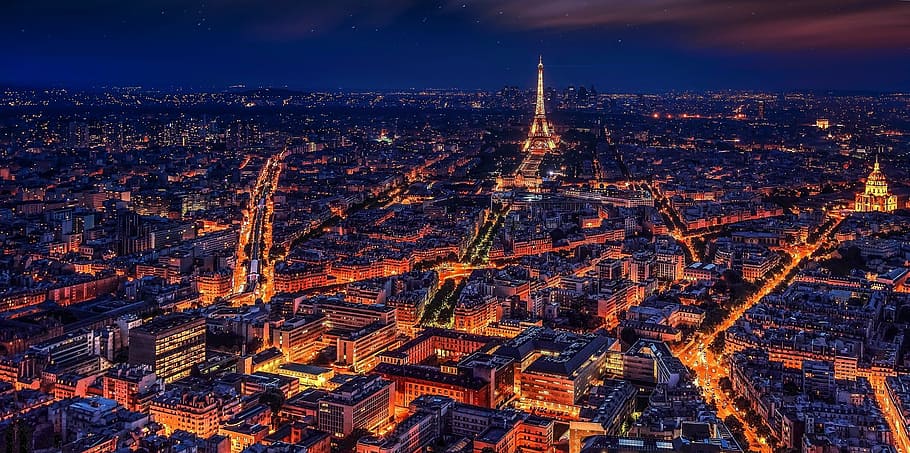Must-See Places To Visit in Paris
Paris really is everything you dreamed of; full of beauty, charm, and elegance. It is a picture-postcard city enchanting in all its moods and characters and eager to show that all that you have imagined is, in fact, true.
If you are a first time visitor to Paris, make sure you see all the renowned attractions. The Eiffel Tower, Notre Dame, the Arc de Triomphe, and Sacre Coeur. The Metro system is excellent, and you can see so much, even in just one day. Of course, Paris will take up as many days as you have to offer her; she truly is the most beautiful and atmospheric city in the world.
>>Also Read: Paris Travel Guide
Here Are A Few Places You Should Visit In Paris
The Eiffel Tower
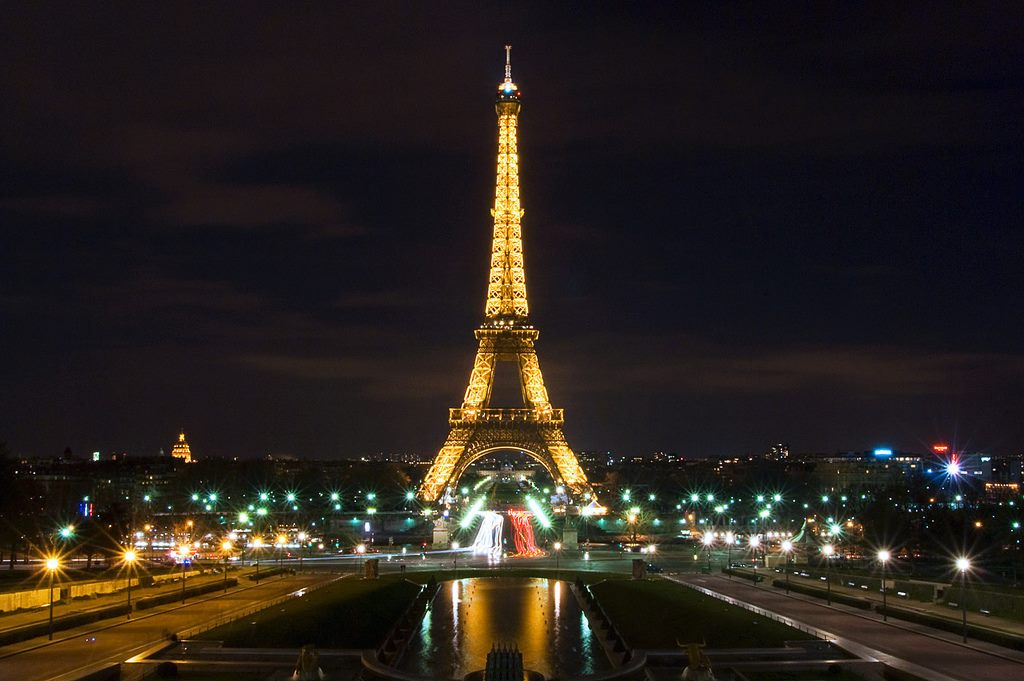
It would be almost unthinkable to visit Paris without seeing the Eiffel Tower. This artistic masterpiece of construction was intended to be only a temporary structure. Now it is synonymous with the city, and its famous profile dominates the skyline with its grandeur. Find the courage and endurance to venture to the top as the breathtaking view is one that will remain with you for many years afterward.
The Eiffel Tower — Le Tour Eiffel — was built for the International Exhibition of 1889, which commemorated the centenary of the French Revolution. The opening honours were performed by no less a dignitary than the Prince of Wales, later King Edward VII of England.
Of the 700 proposals submitted in the associated design competition, Gustave Eiffel’s was unanimously chosen. However, not all were pleased with the plan for this radical construction which some viewed as a blight upon their city, and a petition of 300 names – including those of Maupassant, Emile Zola, Charles Garnier (architect of the Opéra Garnier), and Dumas the Younger – protested against the edifice.
But despite the protests and harsh criticisms of the French intellectuals during its construction, the metal structure has become today the symbol of Paris, attracting over 6 million visitors each year.
Construction began in 1887 and finished 26 months later in 1889. It was at this time the tallest building in the world and remained so until 1929 when the Chrysler Building in New York surpassed it in height. The metal tower was, in the first place, intended only to be a temporary structure that was due to be demolished when the Universal Exhibition had finished. However, fate was to play a part in saving the great tower. The French military used the tower to test radio transmissions, and arising from the positive results, it was saved from destruction. It proved so ideal as a location for broadcast transmissions that now it is the television transmitter for the greater Paris region.
To create this masterpiece of industrial art, over 18,000 pieces of steel were fastened together by two and a half million rivets. Of the 300 steelworkers who were employed in its construction, only one worker lost his life — a remarkable statistic given the scale of the enterprise and the era when this took place.
The tower itself has 3 floors with an ascending vantage point to view the city, but all of them will afford you marvelous views over Paris even if you decide not to go right up to the top. One of the floors has an excellent restaurant, affording you the opportunity to dine in what must certainly be one of the world’s most exhilarating settings.
Inevitably, because of its popularity, large numbers come to visit daily, and the queues can sometimes be daunting. If you can, try and plan your visit for later in the evening when you will spend less time in the queue and, while you wait, have the benefit of enjoying the Eiffel Tower’s memorable light display.
A highlight of every visitor’s memory of Paris, Le Tour Eiffel, which at its inception suffered so much hostility and derision, has, in the present time, come to be the most familiarly recognized symbol of Paris and the French. An emblematic structure of inspired genius, it was built to impress, and it certainly succeeded.
>>Facts About The Eiffel Tower
>>Budget Hotels Near the Eiffel Tower
>>Eiffel Tower Dinner: Why You Should Have Dinner At The Eiffel Tower
Arc de Triomphe
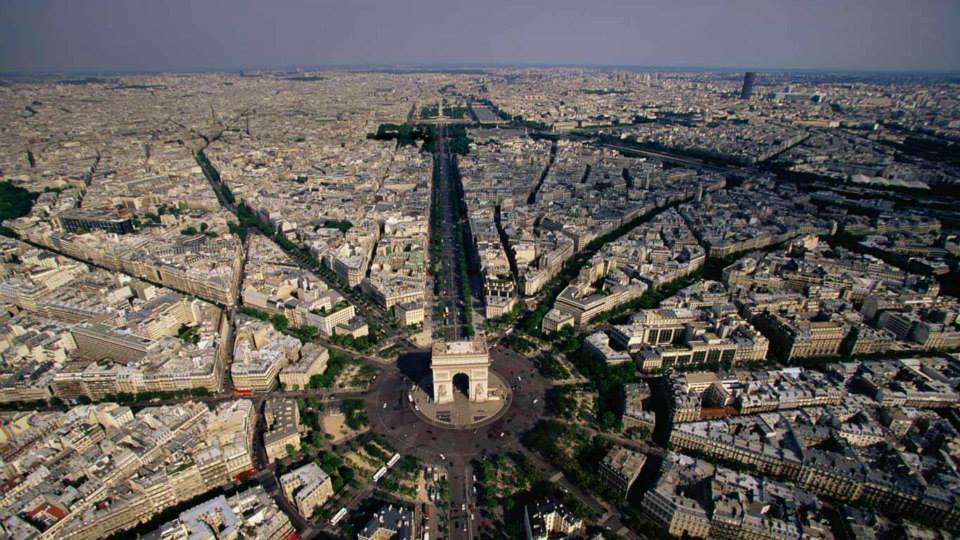
Located at the center of ‘La Place Charles de Gaulle’, at the end of ‘Les Champs Elyssés’, this arch boasts splendid architecture in amazing detail. Make an effort to climb the tower. You will be rewarded with an enthralling view of Paris.
The famous giant arch was first commissioned by Napoleon in 1806, but it took until 1836 for this landmark feature to be finally completed. The arch itself is a formidable 50m tall and 45m wide, decorated with battle scenes and some impressive sculptures. Making the time to go to the top is well worthwhile for the chance to appreciate some striking streetscapes and to admire the rich legacy of Hausmann.
Napoleon originally conceived the grand triumphal arch as a work of self-aggrandizement that would commemorate his own glorious military victories. However, as time passed and his reputation fell into disfavour so too did interest in honouring the diminutive Emperor.
Now an eternal flame commemorates the memory of the dead of World Wars I and II. It is also the final resting place of the unknown soldier who, in 1920, was interred in the tomb, which can be seen at the arch’s base.
Champs Elysees
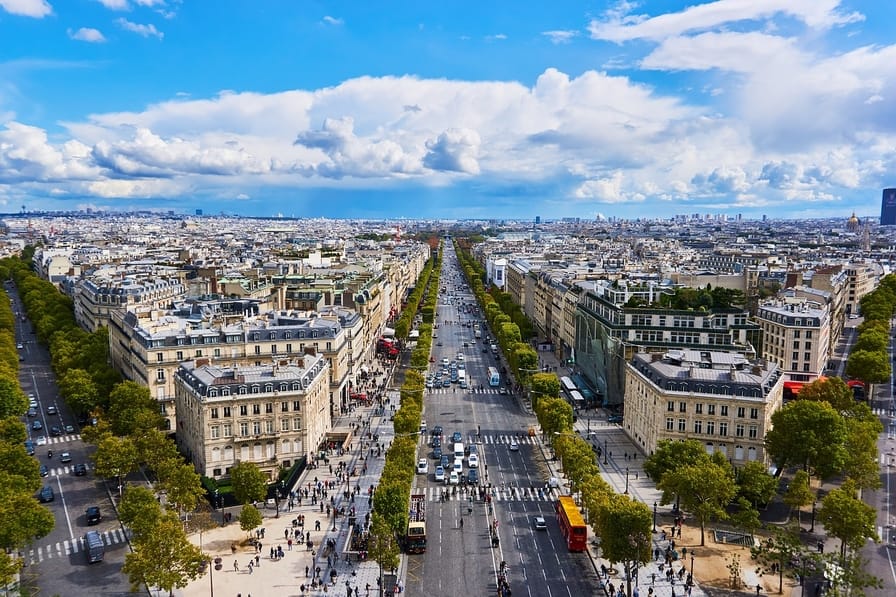
The Champs Elysees has undergone a quiet renaissance in recent times. Blighted for many years by gaudy airline office signs, car showrooms, fast food cafés, and other unsightly establishments of similar ilk, a serious effort has been made to improve the appearance and ambiance of the city’s most famous street. Part of this general makeover is due to the presence of the many upmarket hotels, restaurants, and shops that have now staked a claim to this showcase location.
Often a disappointment at first sight to the excited anticipation of visitors, the Champs Elysees has undergone a quiet renaissance in recent times. Blighted for many years by gaudy airline office signs, car showrooms, fast food cafés, and other unsightly establishments of similar ilk, a serious effort has been made to improve the appearance and ambiance of the city’s most famous street. Part of this general makeover is due to the presence of the many upmarket hotels, restaurants, and shops that have now staked a claim to this showcase location.
The initial stage of the great avenue was conceived by Le Notre in the 17th century and was really an extension of the Tuileries gardens. By the time of the revolution, the entire length of the formidable avenue had been put in place.
It slowly gained eminence and prestige among the fashionable classes that took to frequenting it for weekend recreation. Later, apart from the easy leisure and elegant fashion, what was to stick most in the public memory was the great historical and military symbolism with which the Champs Elysees is associated. The Prussian army used it to celebrate their military victory over France in 1871. Hitler made a similar point of marching his occupying troops down it in 1940 in a swaggering message to the defeated French. Naturally, after the liberation of Paris, the avenue was the joyous venue for the victory march by the allied forces in 1944.
At L’Etoile, towards the avenue’s western end, you will find the Champs Elysees’s great triumphal feature, the Arc de Triomphe. Originally commissioned by Napoleon in 1806 for his own grandiose purposes, the arch commemorates the dead of World Wars I and II and is also the resting-place of the Unknown Soldier.
>>Hotels Near the Champs-Elysees
Sacre Coeur
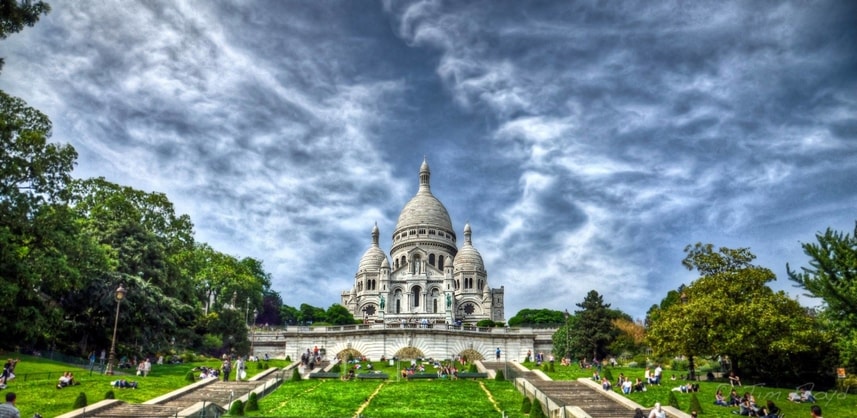
Close to the popular Pigalle area is the famed church of Sacre Coeur. Its deceptive appearance makes it look much older than its years. In fact, it was only built at the beginning of the 20th century and is actually made of concrete — one of the first in Europe. If you can find the time, climb up the tower; the view is wonderful and has the added excitement of a rooftop walk. All very exciting.
The church of Sacre Coeur presents a striking feature on the Paris city skyline. Take a view across the city from an elevated point, and in the distance, you will see this famous church in its prominent location atop the Montmarte butte, the highest hilltop in Paris. From this commanding situation, the gleaming, white domes of the basilica are an imposing edifice that dominates the old area of Montmarte and is a virtual beacon that constantly makes this church one of the most visited attractions in Paris.
Sacre Coeur was built in 1875 as a government-endorsed national act of atonement following France’s defeat at the hands of the Prussians in 1870 and also the civil strife of the Commune uprising. It was constructed with Chateau-Landon stone, which characteristically bleaches with age, thus giving the basilica its notable white appearance.
From a nationally organized architectural competition, the winning architect, Paul Abadie, based his design on the Romano-Byzantine style. As a national project, the construction was financed by contributions from every parish in France with monies donated by both rich and poor. In its interior, the Romano-Byzantine design again features with extensively decorated golden mosaics that include depictions of Christ, the Virgin Mary, St. Joan of Arc, and St Michael. Original stained glass windows were installed from 1903 to 1920 but were destroyed during the World War ll bombardments. These were later replaced in 1946. ‘Le Savoyadore’ is France’s largest bell and weighs a full 19 tons. A gift from the Savoy region, it is housed in the bell tower since 1914.
Above all else, Sacre Coeur is a place of prayer and pilgrimage. The basilica is built on the site where Saint Dennis was beheaded in the 3rd century for his faith, and since 1885, perpetual adoration has been maintained here night and day in devotion to the Sacred Heart.
The church is conveniently reached for those that wish to avoid a steep climb by the novel expedient of a funicular tram connecting with the nearby metro station. Visits to the crypt and dome are possible for a small fee. The panoramic view of Paris from the dome is exhilarating, and on a clear day, the city, in its entirety, displays its vastness before you as a memorable vista of Europe’s most endearing capital.
Montmartre
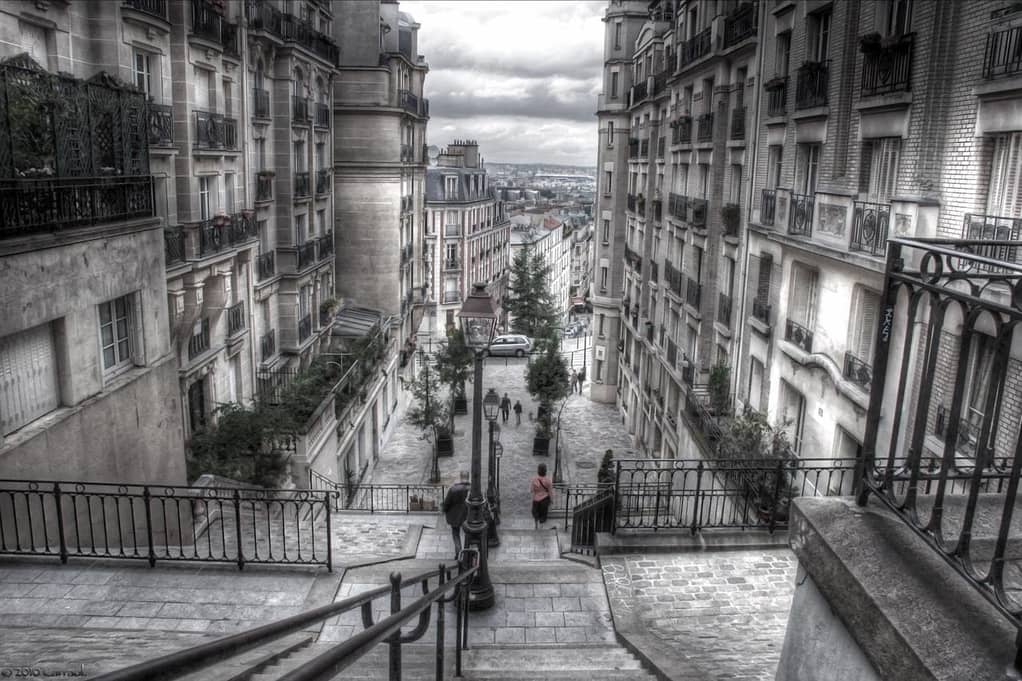
This area surrounding Sacre Coeur is magically atmospheric. Small winding streets weave their way in an almost dizzy fashion leading you on to even more undulating streets. Quaint little shops and crêperies invite you to explore, and it is hard to resist the temptation. It is easy to walk around this area for hours and still find something interesting. A must to visit is the ‘Place du Tertre’. This is filled with artists painting Parisian scenes and people, and it has a truly wonderful atmosphere. This is where you will find an artist to draw your very own portrait. Montmartre contains the house where Picasso once lived and also the famous Metro station of Abbesses, which has close to 280 spiraling steps down to the trains and is adorned with murals by local artists.
>>Paris Neighborhood Guide
>>Montmartre Neighborhood Guide
>>Hostels in Montmartre, Paris
Notre Dame De Paris
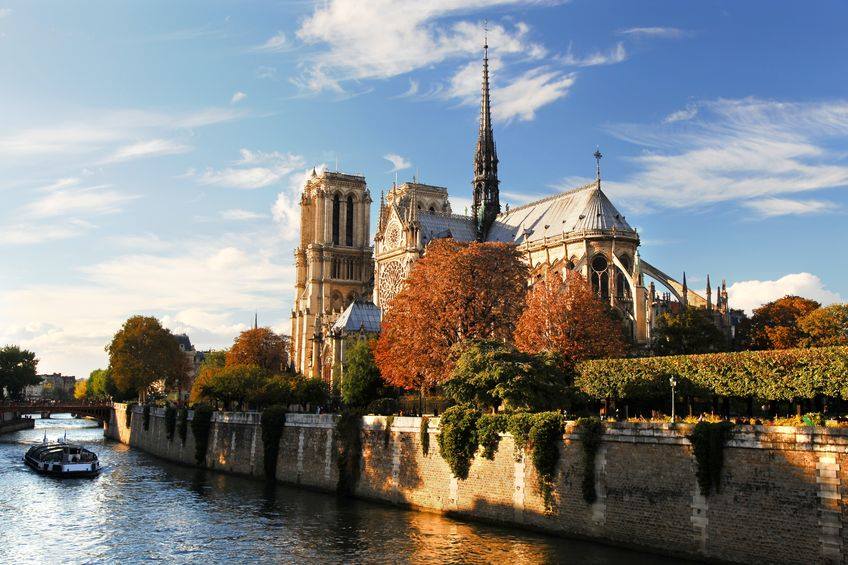
Notre Dame is a cathedral on an island in the middle of the River Seine. It is famous for the hunchback that lived in one of the towers to ring the bell. The traditional view is from the front, but many people just leave it at that. If you walk around the side next to the river to the back, you will see some excellent gothic architecture, including numerous flying buttresses. It is possible to climb up one of the towers and go onto the roof. This is worth it for the view, but also for the opportunity to walk up to the famous bell.
Notre Dame Cathedral is situated right in the very heart of Paris. Its site in the Isle de la Cite was already the location of two earlier churches — one from the 4th century and a later one dedicated to the Virgin Mary. The remnants of both these churches were to provide the foundations for the present basilica.
The inspiration to build Notre Dame came from Maurice de Sully, who had become Bishop of Paris in 1160. He decided to demolish both existing churches and to proceed with the building of a new larger church. The first stone of this new church was laid in 1163 by King Louis VII and Pope Alexander III.
During the revolution, the cathedral suffered serious damage. The transept spire was destroyed as well as the statues from the portals and from the Kings’ Gallery. Remnants of these statues were found two centuries later in 1977 during excavations. During the period of the revolution, the cathedral was turned into of wine warehouse as well as other inappropriate uses.
Napoleon reintroduced some dignity to the cathedral when during the course of a solemn ceremony, he reintroduced Catholicism to the state. He also used Notre Dame as the setting for his self-coronation as Emperor.
Notre Dame de Paris is built in the form of a crucifix, demonstrating the unique importance of the church in the Middle Ages. It is 402 feet in length and 41 feet in width, with the nave reaching to a height of 115 feet. Its pillars are up to 16 ft in diameter. The towers are 226 ft high, and 368 stairs are required to access the top.
After the popular success of Victor Hugo’s book Notre-Dame de Paris, published in 1831, attention was again focused on the poor condition of the building, prompting King Louis-Philippe to issue a decree in 1844 to restore the cathedral. During the 19th century, Baron Georges-Eugène Haussman, Napoleon III’s city planner, had all houses built around the cathedral expropriated and demolished in order to free the facade.
In the Commune uprisings of 1871, the cathedral was almost burnt down by the communards, and reports support the fact that a fire, made of chairs, was set inside the cathedral. Fortunately, the building managed to escape catastrophic damage.
Today, Notre Dame is recognized as one of the finest examples of Gothic architecture. It is the most visited monument in France with upwards of 10 million visitors per year.
Don’t Miss:
• At the Western gate, the bronze star indicates the zero kilometer point. Here you are at the very center of Paris, and all distances in Paris and throughout France use this point as their reference.
• Nearby, at the exterior of the cathedral, you can gain access to the Crypts. This veritable archaeological museum is well worth a visit.
>>Must-See Cathedrals in Paris and France
Versailles
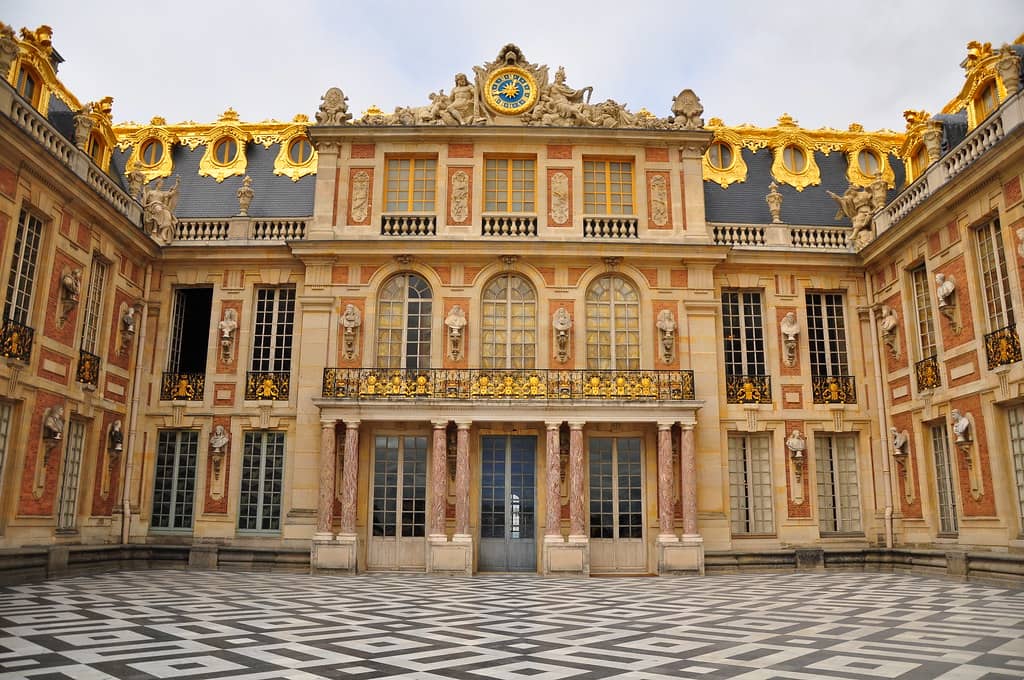
This is the palace about 30 miles outside Paris, where Louis XIV, the Sun King, lived before the French revolution. The luxury and Baroque architecture is marvelous, and it is easy to get a sense of the splendour that once surrounded the nobility of France.
>>Things To Do In Versailles
>>Palace of Versailles Facts
The Louvre
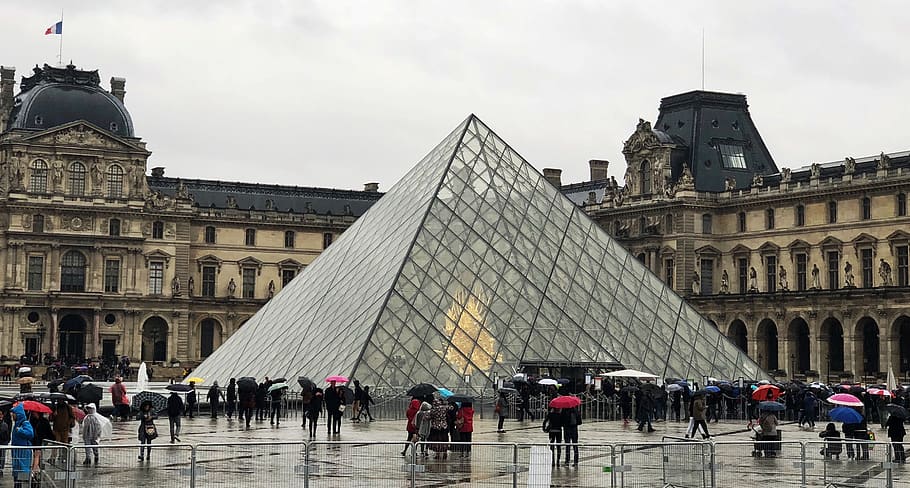
This huge former palace next to the River Seine is now home to hundreds of paintings, all arranged into wings. It contains many famous paintings and sculptures, such as ‘Venus de Milo’ and ‘Mona Lisa’. If you are interested in art, you could spend weeks here and still not see everything.
The very scale of the Louvre is both impressive and daunting. Formerly a royal residence in the 14th century, it has beautiful staterooms, courtyards, and galleries. First opened to the public as a museum in 1793 by the revolutionary convention it has continued to grow in size with President Francois Mitterand’s grand Louvre project of the 1980s more than doubling the capacity.
The crowds, the expansive dimensions, and the proliferation of exhibits can give the visitors a sense of diminishing in size as the very place itself appears to grow. The best approach for a first-time visit is to be selective and focused, deciding what most you would like to see and accepting that you cannot see it all.
The exhibits are organized in collections based on the original royal collections, and these, in turn, are arranged into wings — Richelieu, Scully, and Denon. Colour coding, labelling, and regular signs will ease the journey through the various departments. As well as being a spectacular palace building, the Louvre is about more than the Mona Lisa. It is replete with artistic treasures of great diversity, including Greek, Roman, and Egyptian antiquities, Islamic and Oriental art, French and European sculpture, and, of course, exquisite French, Italian, and Spanish painting.
>>Visiting the Louvre Museum
>>Budget Hotels Near the Louvre
>>Things To Do Near The Louvre
>>Why You Could Skip the Louvre
>>Why You Should Book a Fast-Track Ticket to the Louvre
>>Most Popular Exhibits at the Louvre
Musée Picasso
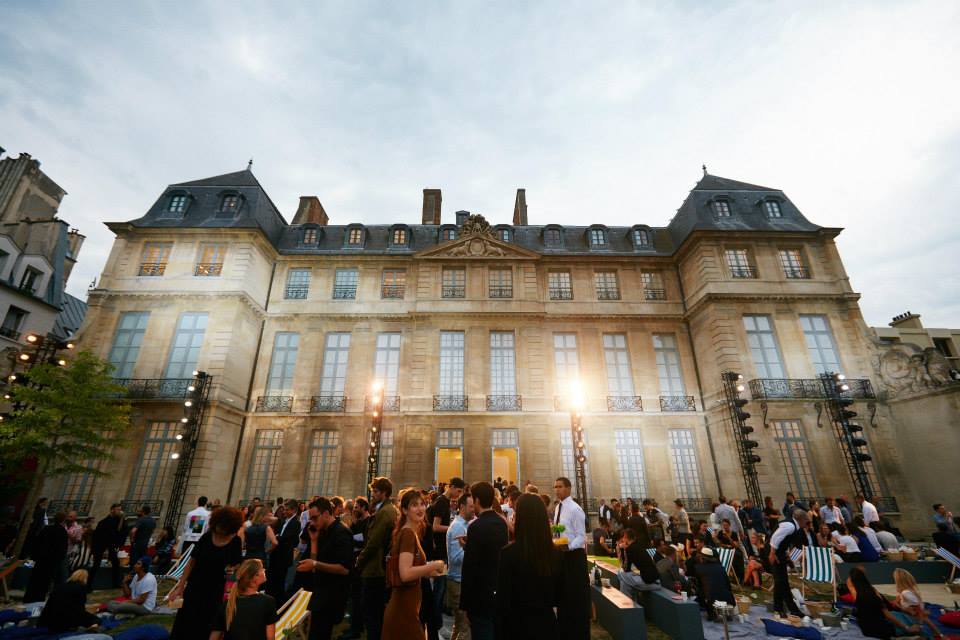
This museum near the Bastille contains many paintings and sculptures of Picasso, the famous post-impressionist artist. Although he was, in fact, Spanish, he lived most of his life in Paris, and this museum gives a good impression of his works.
Georges Pompidou Centre
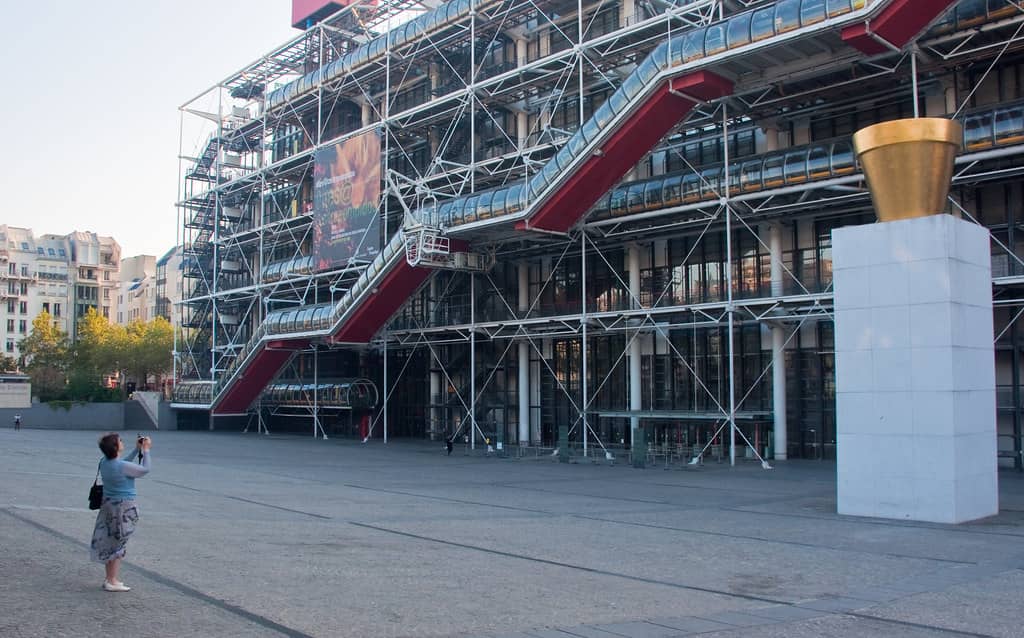
Built by Prime Minister Georges Pompidou in the 60s, intended to promote art and culture, this large building has a very interesting architecture. The building is made out of glass, and the main escalator runs in a glass tunnel up the outside of the building. Although the building contains many forms of art, the one which attracts the tourists is the Museum of Modern Art. This post-1900 art includes works by Kandinsky and Dali. There is also a café on the top floor, from which you have a lovely view of Paris.
Musée d’Orsay
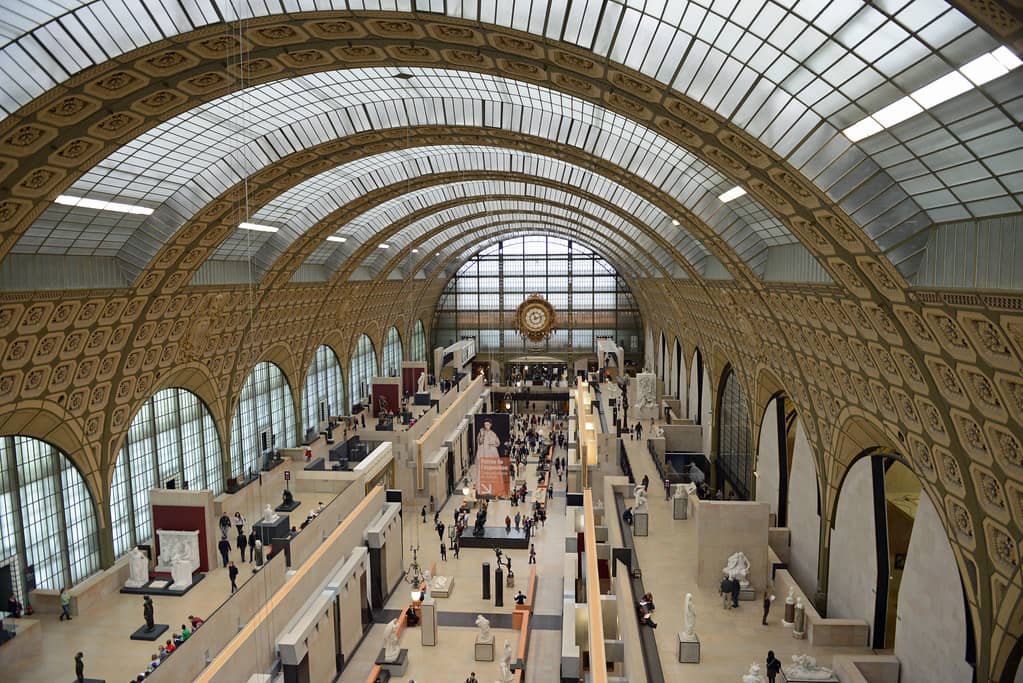
A famed museum that contains works by impressionist artists such as Monet, Manet, and Van Gogh, housed in a building converted from a railway station. If you have the time, it is worth a trip, both for the famous paintings it contains and the architecture of the building.
